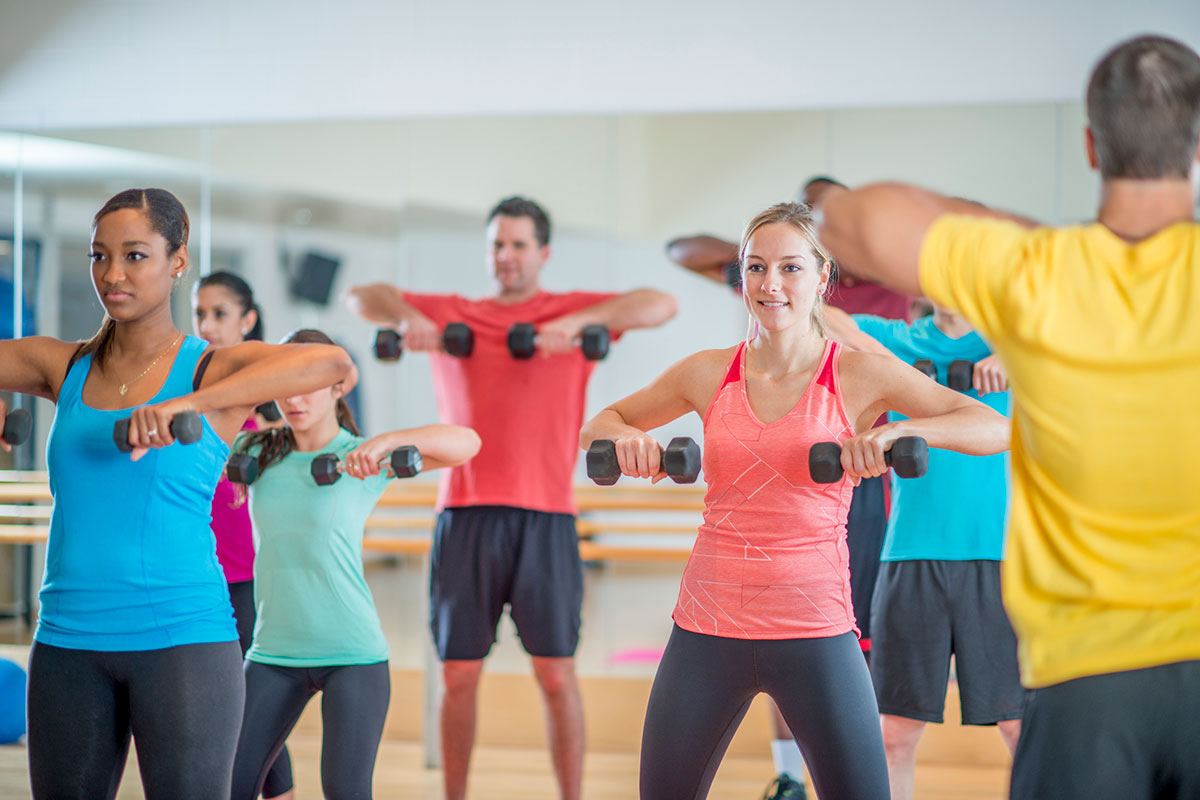
If you’ve ever struggled to teach a class participant a particular exercise or combination that they just aren’t getting, you know how frustrating it can feel—for both of you. Your job as a fitness instructor is to help clients figure out exercise technique, but that process can get awkward if the participant feels embarrassed or discouraged by a lack of mastery. You might also feel this way for missing the mark on how to teach it. Your best line of defense for diffusing these potentially high-pressure situations is to prepare multiple options for breaking down an exercise or sequence. Use the suggestions below as a starting point to get everyone moving to the same beat.
Save it until the end
As long as the participant isn’t at risk of injury, sometimes it's best to leave a detailed technique tutorial until the end of class. Besides, it can be futile to provide general technique tips to the group when only one person really needs extra help. And it quickly becomes awkward to deliberately focus on one participant for too long while the rest of the class looks on. Even a well-intentioned interaction like this might really embarrass the participant, and possibly frustrate the rest of the class. A better approach is to offer an alternative to the exercise in question and move on. After class, ask the participant if he or she has a few minutes to go over the exercise with you. With the pressure off and no one watching, you might find the participant is able to pick up proper form more quickly under your guided instruction.
Cater to multiple learning styles
As a fitness instructor, you might have observed that people prefer to learn new moves in different ways, such as watching, listening and/or doing. Usually a combination of all these works well, perhaps with an emphasis on one particular style. However, teaching a fitness class means you're dealing with multiple learning preferences all at once. That can get tricky! One solution is to always use a variety of teaching techniques. For example: show the class what the exercise looks like by doing it yourself. As you visually demonstrate, explain what’s happening. Invite participants to perform the exercise with you. Continue to demonstrate, explain and perhaps modify as needed.
Use props and tech tools
Look around the group exercise studio where you teach. You might find useful props such as bars, bands or dowels that can help you demonstrate proper movement angles in class. Sometimes asking participants to look in the mirror is all it takes for them to see—and correct—what’s going wrong with their form. This might be especially true for people who are visual learners. If that doesn’t work, or there are no mirrors, turn to your phone for assistance. Try this technique when meeting briefly with a participant after class: Take a photo or video of the person in action to help them understand and correct technique problems. Mobile apps like Coach’s Eye and Hudl Technique allow you to go more in-depth with on-the-spot footage or video imported from your camera roll. For example, you can view slow-motion playback and draw lines, angles and arrows on a video or photo to review and analyze problematic or desired movement patterns. If it’s the choreography that’s a challenge, have them film you so they can practice on their own to master the sequences.
Go back to the drawing board
In a group exercise class, you’ll quickly see when a good portion of the group isn’t “getting” a move or choreography pattern. However, suddenly changing direction to a less-advanced version of the exercise can be a hard sell in group fitness—people tend to forge ahead with what you’ve already shown them! If participants are resistant to go back to basics, switch to a different exercise as soon as possible. Make a note to revise and revisit the problematic exercise or choreography next class, starting out with a more basic jumping-off point.
Let it go
Finally, if a particular exercise or choreography pattern seems to create a stumbling block for more than a few group exercise participants, you might need to face the fact that it’s not the right exercise for right now. Perhaps your students need to do more foundational moves or choreography before they’re ready for this next step. If you can’t logically tweak the movement so it’s more user-friendly, consider ditching it (for now, at least). Fitness instructors are responsible for helping participants improve and progress. To that end, carefully break down exercises and carry on from there, using the tips in this blog post. Do you have additional tips for breaking down exercises in a fitness class? Share your recommendations in the comments section below!

